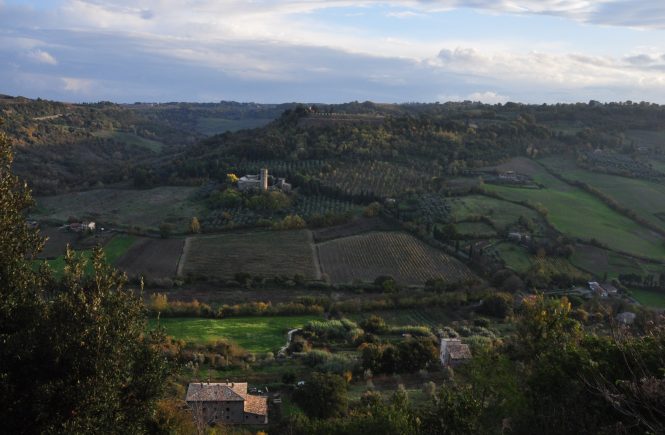I'd always wanted to try L'Asino d'Oro, the Umbrian restaurant, run by renowned chef Lucio Sforza, that had made the leap from Orvieto to Rome's Montesacro neighborhood. But, somehow, life got in the way. Before I had a chance to try it, the Rome location closed.
And then, this past February, L'Asino d'Oro reopened in Monti. A short walk from my apartment. I had no more excuses.
This past weekend, I went for the first time. And it was so good, I went back again four days later for lunch. I can't recall any other restaurant in Rome–not Le Mani in Pasta, not Palatium, not even Roma Sparita–that's made me such an addict so quickly.
Given the restaurant's glowing reviews and the elegant crowd inside (unsurprisingly, the restaurant was completely booked up), I had high expectations on Saturday. The meal, though, beat every single one.
Dinner kicked off with two surprises: smiling servers (rare for Rome!), and a little "taste" from the kitchen, a chicory and ricotta frittata drizzled with olive oil. Then came the fettucine in a duck liver and Vin Santo sauce (€10), one of those bizarre-but-perfect pairings that you just don't find at your average trattoria, and scafata with fava beans, peas and chard (€9). Wild boar stewed in "dolceforte," a reduction of chocolate and red wine–kind of like an Umbrian version of mole (€15). And a super-tasty twist on zuppa inglese that was light, creamy and just sweet enough.
I returned that Wednesday. I had to try their lunch: €12 for an antipasto, primo, secondo, glass of wine, and water. As I suspected, it just might be the best lunch deal in town. (Four-euro pastas at the Spanish Steps aside). For starters, the patio (shown at top) is a lovely choice on a nice day. The service is just as attentive as at night. The portions are smaller, of course, but just right for a lunch that doesn't leave you reeling. (Or rolling). The menu changes daily, and it wasn't quite as creative as what we'd seen at dinner. Still, it was delicious: pumpkin soup, ravioli with ricotta (below), and lamb stewed with artichokes. 
So there you are. Another top restaurant to add to your list, and a well-priced one, too. As for me, I'm just thrilled to have found a restaurant that replaces a once-upon-a-time favorite in Monti. Let's just hope L'Asino d'Oro doesn't follow the same well-trodden path.
L'Asino d'Oro. Via del Boschetto 73, Rome. Closed Sundays and Mondays. Click here for a map of L'Asino d'Oro's location.
You might also like:
Pasta for Four Euros? Yes, Please






